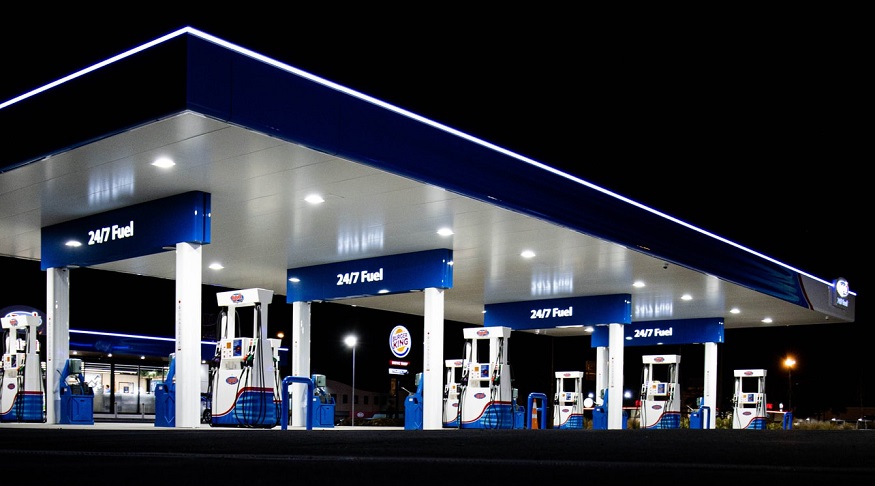To: The Impact Readers
Hello World 🛍️
Did you get some sweet deals over this weekend? The sweetest deal we all got was getting a chance to forget the chaos in the world and spend some time with our families.
Too cliché?
Well, we got a lot of time to write up this week’s Impact and make some much needed updates to the website based on feedback you’ve all be providing us.
Thank you for sticking with us and enjoying The Impact week over week.
In Your Inbox: How Aum Energy has created a low-carbon, renewable natural gas solution; Plug Power raises $1B to build a Nation-Wide Hydrogen network; Mississippi Power is piloting “smart neighborhoods”

This week Rohit Vedhara, the Director of Aum Energy, talks about their innovation in anaerobic digestion and how it ties in with policy and the market.
Can you describe what your company does?
Aum Energy is innovating at the intersection of advanced biology and agriculture to expand the scope of anaerobic digestion (AD) by developing proprietary microbial solutions. The end result is low carbon renewable natural gas (RNG / biogas) and organic fertilizer.
The importance of AD has been highlighted in recent years by a variety of teams, such as Michigan State’s Biogasdoneright collaboration, Iowa State’s C-Change and the IEA’s Bioenergy Task 37 group, led by Jerry Murphy from the Environmental Research Institute in Cork, Ireland.
By placing AD at the heart of the farm:
However, today’s AD technology design doesn’t allow for the efficient utilization of lignin-based feedstocks due to the manner in which lignin protects the cellulose chains. In the words of a Danish AD operator “we throw manure and food waste into our AD plant each month and any cereal straw (lignin-based) that goes it just comes out a month later undigested.”
Aum Energy and it’s partners have worked on degrading other tightly-packed lignin-rich compounds in recent years and a uniquely successful body of work has encouraged the team to look for other market problems that need to be solved, specifically those that support the reduction of emissions. Being able to degrade wood, cereal residues (often up to 50% of the plant), grasses/leaves opens up AD to another billion tonne/annum source of feedstocks that are currently underutilized or simply burned in the atmosphere, a common phenomenon in Asia.
How does policy influence the market?
The European Commission has created a body of incentives, which has accelerated the development of the biogas industry in Europe such that there are over 15,000 farm-based AD plants in operation currently. As the industry evolves and as nations seek to meet stringent Paris climate targets, it is expected that the AD industry will continue to grow in order to meet demands for organic fertilizer, circular economy initiatives and low carbon fuels. The European Biogas Association expects that the industry will deliver 1,000 more sites through this decade, especially in underplayed southern and eastern Europe.
Aum Energy’s particular relevance this trend lies in being able to open up the feedstock mix, so that there is less competition for maize (an issue in Germany) and so that forests can be better managed and also dedicated energy crops grown on degraded land.
In a similar vein, the American Biogas Council and Coalition for Renewable Natural Gas are optimistic about the future prospects for AD in the USA, where strong incentives such as the LCFS are sparking a boom in new projects.
As the industry develops, it is expected that not only will there be more agri-based farm projects, but also integrated projects on the outskirts of cities which also process food and other organic wastes. As individual scale of projects build, then it becomes more economic to upgrade biogas into biomethane and to connect to gas grids to optimize the climate impact as well as to secure long-term incomes for asset owners.
What does the future look like?
In terms of recent advances in biology, it is expected that science will provide the ability to supercharge the digestion process for a wide variety of feedstocks in different locations; all using their own bespoke microbial solution.
More efficient technology and lower processing costs will underpin the growth of AD in countries like France and Denmark where a tripling of industry scale is sought after and where locally-manufactured biogas will back out imported natural gas and also provide energy that can be dispatched at night, further reducing reliance on fossil fuels. Less transmission infrastructure reduces utility costs and risks.
Aum Energy sees a bright future for AD across the globe, from edge-of-forest projects, to mini-digesters in cities handling leaves/grasses to projects in SE Asia handling rice and palm oil plantation wastes. Sustainable energy provision also means sustainable incomes that are not tied to underlying agricultural commodity prices.
AD is nothing more than enhancing nature’s own processes in a controlled manner and it deserves more focus from investors and policy makers as part of a low cost energy transition.
Sign up for The Impact and learn the perspectives behind the latest sustainability trends

Plug Power (NASDAQ: PLUG) is already a leader in the hydrogen space and expected to be one of the behemoths going forward focused on building out a truly green hydrogen network. Why? Their unique position provides them with the necessary capital, in-house, proprietary technology and leverage with low cost renewable power to be successful while deploying the ~$1 Billion Plug Power just raised.
With the hydrogen economy expected to reach an estimated $2.5 Trillion by 2050 – we should see Plug Power among those pushing our infrastructure to meet the needs we are growing towards.
Why does it matter?
What’s next?
Thoughts
Hydrogen is something many people are bullish on especially due to the significant advancements in technology and the emergence of low cost renewable power being available grid wide. With certain states already meeting grid capacity requirements and leaving 100s of MW of renewable power in interconnection ques means hydrogen production facilities may see economic viability in opening up production facilities to begin feeding the emerging demand by trucking companies and other heavy duty transportation vehicles.
Plug Power may have opened a Pandora’s Box for investors – likely attracting entrepreneurs across the globe to look for ways to apply their discoveries in the space to help accelerate the hydrogen economy forward.

Microgrids are an emerging grid architecture as we are learning day by day. More utilities are beginning to see the advantages of having such an architecture available for them to load balance and deliver a higher level of resilience to their customers than ever before.
Southern Company’s subsidiary Mississippi Power is currently piloting “smart neighborhoods” where Tesla Solar Roofs and Powerwalls are being married with smart home tech in order to see what advantages can come from this setup.
Why does it matter?
What’s next?
Thoughts
Mississippi Power is one of many likely going to push forward on microgrid research – seeing companies like Tesla pushing hard on Virtual Power Plants enabled by their batteries and solar systems will likely show a growth into smart home tech being connected to the electric grid as well. Monitoring the success of these pilots will enable great growth to the microgrid world.
Writers: Swarnav S Pujari, Ian Sumner, Daniel Kriozere
If you aren’t absolutely thrilled with The Impact, reply and let us know why. Or you can unsubscribe from all updates by clicking here.
Copyright © The Impact 2020. All Rights Reserved || 19 Morris Ave, Bldg 128, Brooklyn NY 11205
Develop your market map of up-and-coming climate startups and market opportunities by subscribing to our weekly newsletter for free.